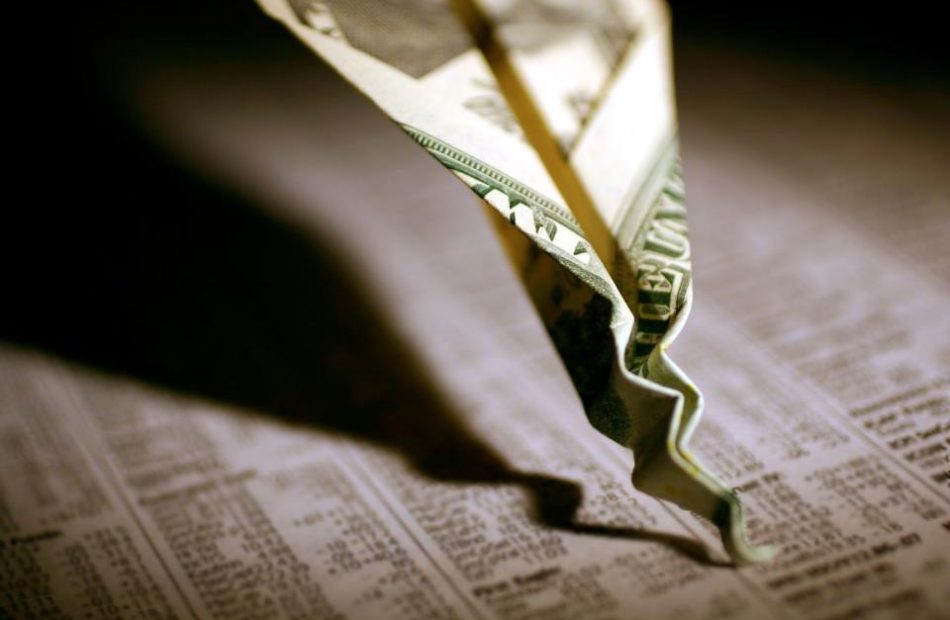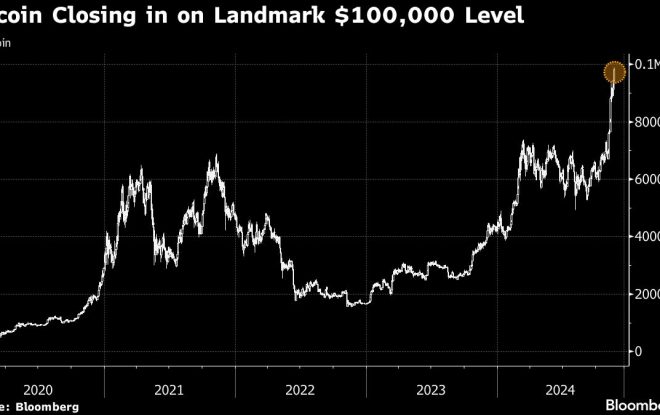Are the Dow, S&P 500, and Nasdaq Composite Set to Plunge? 1 Virtually Flawless Forecasting Tool Thinks So.
Over the last century, no asset class has performed better than stocks. While Treasury bonds, housing, and various commodities, including gold, silver, and oil, have delivered positive returns, nothing has come close to matching the annualized return stocks have brought to the table.
Thanks to the artificial intelligence (AI) revolution, stock-split euphoria, and stronger-than-expected corporate earnings, Wall Street’s bull market rally recently celebrated its two-year anniversary. The mature stock-driven Dow Jones Industrial Average (DJINDICES: ^DJI), benchmark S&P 500 (SNPINDEX: ^GSPC), and growth-fueled Nasdaq Composite (NASDAQINDEX: ^IXIC) have all reached multiple record-closing highs in 2024.
But history also tells us that stocks don’t move higher in a straight line. Though no metric or indicator can concretely predict short-term directional moves in the major stock indexes with 100% accuracy, it doesn’t stop investors from seeking out events and forecasting tools that have strongly correlated with advances or declines in the Dow Jones, S&P 500, and/or Nasdaq Composite.
At the moment, one nearly flawless forecasting tool offers an ominous warning for Wall Street that investors would be wise not to ignore.
It’s been almost six decades since this probability tool was incorrect
For more than a year, I’ve examined a number of correlative events and predictive indicators that have, until now at least, incorrectly forecast downside to come in the Dow, S&P 500, and Nasdaq Composite. This includes the first notable decline in U.S. M2 money supply since the Great Depression, a big decline in the Conference Board Leading Economic Index (LEI), and one of the highest S&P 500 Shiller price-to-earnings ratios during a continuous bull market, when back-tested 153 years.
However, the one virtually flawless forecasting tool that portends trouble for the U.S. economy, and subsequently Wall Street’s three major stock indexes, is the Federal Reserve Bank of New York’s recession probability indicator.
The NY Fed’s recession tool examines the spread (difference in yield) between the 10-year Treasury bond and three-month Treasury bill to calculate how likely it is that a U.S. recession will take shape within the next 12 months.
Usually, the Treasury yield curve slopes up and to the right. This is to say that bonds maturing 10 or 30 years from now are going to offer higher yields than Treasury bills set to mature in a year or less. The longer your money is tied up, the higher the yield should be.
But every so often, the yield curve inverts, which is where short-term bills sport higher yields than long-term bonds. Inversions are typically a sign of skepticism from investors about the health of the U.S. economy.
The spread between the 10-year and three-month Treasury yields has been upside-down for quite some time. According to the NY Fed’s recession forecasting tool, there’s a 57.05% chance of the U.S. dipping into a recession by September 2025.
Keep in mind that this predictive tool has been wrong before. In October 1966, the probability of a U.S. recession taking shape within 12 months exceeded 40% but never materialized. While not every yield-curve inversion is followed by a recession, every U.S. recession following World War II has been preceded by a yield-curve inversion. Think of a yield-curve inversion as a necessary ingredient to an economic downturn.
Although the NY Fed’s recession probability indicator isn’t perfect, it has been 100% accurate over the last 58 years.
You might be wondering what a predictive tool for the U.S. economy has to do with the Dow Jones Industrial Average, S&P 500, and Nasdaq Composite. A study released in 2023 from Bank of America Global Research found that approximately two-thirds of the S&P 500’s peak-to-trough downturns since 1929 have occurred after, not prior to, a U.S. recession being declared.
Even though the stock market doesn’t mirror the U.S. economy, a recession would be expected to drag down corporate earnings. Eventually, this would be bad news for Wall Street and its major stock indexes.
Perspective has a tendency to change things on Wall Street
Based purely on what the NY Fed’s recession probability tool is saying, the Dow, S&P 500, and Nasdaq Composite could be in for a bumpy ride in the quarters to come. However, this only tells part of the story.
As noted earlier, stocks have been superior to all other asset classes over the last century. For investors willing to take a step back, widen their lens, and look to the horizon, none of these downside indicators — including the NY Fed’s recessional probability tool — are particularly worrisome.
The non-linearity of the economic cycle serves as the perfect example of how perspective can be a game changer. While recessions are both normal and inevitable, they’re historically short-lived. Only three of the 12 recessions since the end of World War II endured at least one year, with none surpassing 18 months.
On the other end of the spectrum, a majority of economic expansions stuck around for multiple years. Wagering on the U.S. economy (and subsequently corporate earnings) to expand has been a winning strategy.
Being able to take a step back and look to the horizon has been undeniably beneficial on Wall Street, too.
In June 2023, with the S&P 500 bull market officially confirmed, the researchers at Bespoke Investment Group released the extensive data set you see above, which was posted on social media platform X. Bespoke calculated the calendar day length of every bear and bull market for the S&P 500 dating back to the start of the Great Depression in September 1929.
As you’ll note from the table, the average S&P 500 bear market has lasted only 286 calendar days, or roughly 9.5 months. Comparatively, the typical bull market over 94 years has endured 3.5 times as long (1,011 calendar days). Further, 13 out of 27 S&P 500 bull markets have lasted longer than the lengthiest bear market. The value of being a long-term optimist simply couldn’t be clearer.
Ultimately, we’re never going to be able to predict short-term directional moves in the Dow Jones Industrial Average, S&P 500, and Nasdaq Composite with concrete accuracy. But this shouldn’t stop long-term-minded investors from maintaining perspective and allowing time to work its magic.
Don’t miss this second chance at a potentially lucrative opportunity
Ever feel like you missed the boat in buying the most successful stocks? Then you’ll want to hear this.
On rare occasions, our expert team of analysts issues a “Double Down” stock recommendation for companies that they think are about to pop. If you’re worried you’ve already missed your chance to invest, now is the best time to buy before it’s too late. And the numbers speak for themselves:
-
Amazon: if you invested $1,000 when we doubled down in 2010, you’d have $21,121!*
-
Apple: if you invested $1,000 when we doubled down in 2008, you’d have $43,917!*
-
Netflix: if you invested $1,000 when we doubled down in 2004, you’d have $370,844!*
Right now, we’re issuing “Double Down” alerts for three incredible companies, and there may not be another chance like this anytime soon.
*Stock Advisor returns as of October 14, 2024
Bank of America is an advertising partner of The Ascent, a Motley Fool company. Sean Williams has positions in Bank of America. The Motley Fool has positions in and recommends Bank of America. The Motley Fool has a disclosure policy.
Are the Dow, S&P 500, and Nasdaq Composite Set to Plunge? 1 Virtually Flawless Forecasting Tool Thinks So. was originally published by The Motley Fool




Leave a Reply